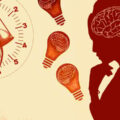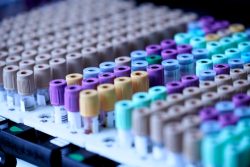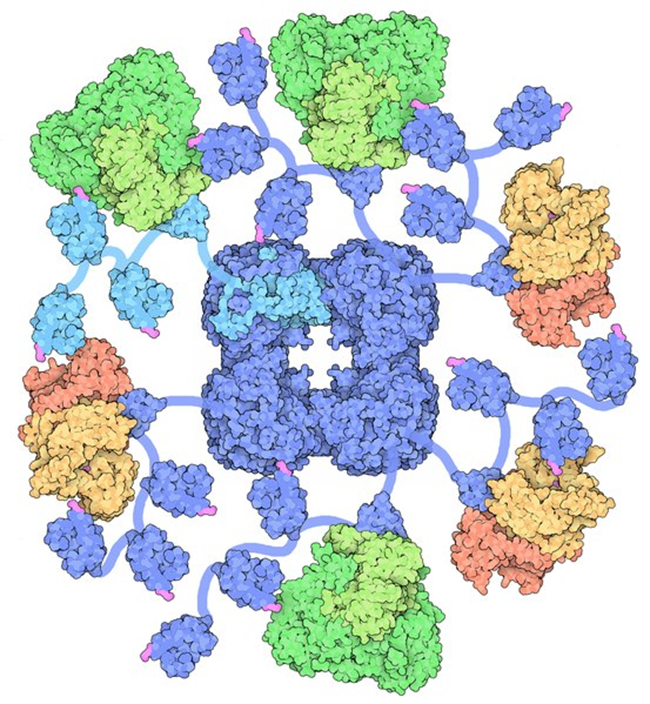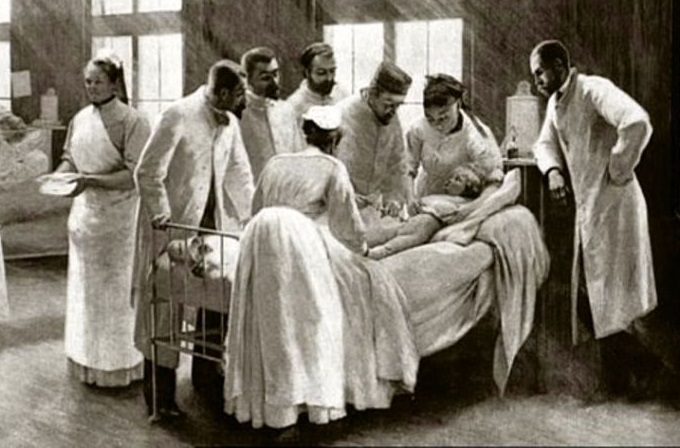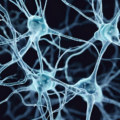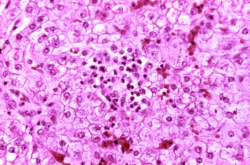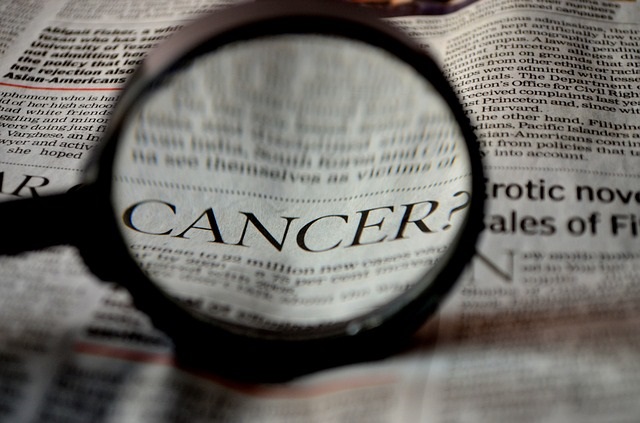In US population studies, the prevalence of migraine is approximately 18% in women and 6% in men. About 90% of sufferers have moderate or severe pain and 75% have a reduced ability to function during the headache attacks. One third require bed rest during an attack. A study at the Mayo Clinic showed the incidence in women increased 56% during the 1980s and 34% during the same period in men. Although the term “migraine” is often used to describe any severe headache, a migraine headache is the result of specific physiologic changes that occur within the brain leading to the characteristic pain and associated symptoms. They are usually accompanied by sensitivity to sound, light and odors and there may be nausea or vomiting. Typically, the headache involves only one side of the head but in some cases it may be bilateral. The pain is often described as throbbing, pounding and maybe made worse with physical exertion. Silent migraine is a variant where the patient may experience aura, nausea, vomiting and other nervous symptoms without headache.
Migraine headache is estimated to affect up to 28% of adolescents, most of whom are female. It has been associated with reduced quality of life and academic disruption due to missed school days. In 2014 the US Food and Drug Administration approved an existing medication called topiramate for prophylaxis in adolescents between the ages of 12 and 17 years. There are several possible adverse effects from this drug, some potentially serious. Prophylactic drugs are unpromising and unpredictable. A mild degree of prevention could be obtained from the use of acupuncture.
Migraine Precipitants
Of 171 patients who fully completed a survey, 49.7% reported alcohol as a precipitating factor of headache other than migraine. Only 8.2% reported aspartame and 2.3% reported carbohydrate. Patients with migraine were significantly more likely to report alcohol as a trigger. They also reported aspartame as a precipitant three times more often than those having other types of headache. Non-nutritive sweeteners, including aspartame, saccharin, sucralose, neotame, acesulfame-K and stevia have all been questioned as to their safety. Pregnant and lactating women, children, diabetics, migraine and epilepsy patients, represent the susceptible population. Although sucralose is not considered to be a migraine trigger, a patient was reported with attacks of migraine consistently triggered by this sweetener.
Hypoxia, Pseudo-hypoxia, and Migraine
Migraine with aura is prevalent in high-altitude populations, suggesting that hypoxia has a part to play in etiology. Of 15 patients with migraine headaches, artificially induced hypoxia triggered migraine attacks in eight patients.
Thiamine deficiency produces abnormal gene expression in brain exactly like that induced by true hypoxia. Migraine is a risk factor for thiamine deficiency and Wernicke encephalopathy (WE), the classic thiamine deficiency disease that affects the brain. Two female patients have been reported with chronic migraine. They also had clinical signs and laboratory support for WE. Both patients received intravenous thiamine supplementation, leading to improvement of both WE and the associated headache. The authors suggested that nausea and vomiting, occurring with migraine, may lead to the thiamine deficiency. However, headache, nausea, vomiting and loss of appetite are symptoms that occur in the early stages of WE, thus simulating migrainous features and the association is by no means clear. The authors suggest that thiamine supplementation might be a promising therapy in a subset of patients with chronic migraine.
Also, the range of pathologies associated with magnesium deficiency is staggering, including migraine, multiple sclerosis, glaucoma and many other disorders. It is important to emphasize once more that magnesium and thiamine work together in the cellular machinery that produces energy and deficiency of either is critical. Chronic recurrent nausea in childhood is a poorly described symptom and in a study of 45 affected children, 62% had migraine headaches. They also suffered from dizziness, anxiety, fatigue and sleep problems. The exact incidence of dizziness and vertigo during adolescence is not known. For those few adolescents who seek outpatient evaluation, the majority are diagnosed with migraine headaches and many suffer from postural orthostatic tachycardia syndrome (POTS), a condition that has been reportedly due to thiamine deficiency in some cases.
Autonomic Asymmetry
Normally there is a balance between the autonomic tone of the right and left half of the body. However, under stress or with hypothalamic instability this balance may be disrupted and result in the marked autonomic asymmetry seen in migraine. Abnormal regulation of the large cranial arteries appears to play a significant role in the mechanisms of migraine pain, also reflecting abnormal autonomic function.
Migraine and Diet
Attack frequency of migraine in children was associated with higher intake of high fat or sugar. The processing of both is dependent on thiamine. With these strong associations in the medical literature, it is impossible not to contemplate that the sweet sensory input from the tongue to the brain is an important trigger for migraine. There has been a steady increase in sugar consumption in America over the past few decades, suggesting the possibility that it represents the published increased incidence of migraine in the 1980s as mentioned above. It also suggests the possible implication of artificial sweeteners as migraine triggers.
The association of migraine with alcohol ingestion might be an important observation, since alcohol has long been known to be a cause of thiamine deficiency in the part of the brain that controls the autonomic nervous system. It has also long been known that beriberi, the classical thiamine deficiency disease, causes autonomic dysfunction in its early stages. One of the most important observations that I observed in practice was that a mild degree of this deficiency makes the brain extremely sensitive to many different input stimuli. It results in a high degree of sympathetic nervous system activity, hence so-called panic attacks that are really distorted fight-or-flight reflexes. Patients complain of constant anxiety, heart palpitations, unusual sweating, nausea, vomiting, dizziness and brief fainting attacks known as syncope. This collection of symptoms, thought by many physicians to be psychological in nature, is also referred to as postural orthostatic (positional) tachycardia (rapid heart) syndrome (POTS).
In a person who is in a marginal state of malnutrition, any mild stress such as a vaccination, a mild infection or some form of trauma may initiate POTS. A reader might conclude that this diversity of symptoms, that include the incidence of migraine, cannot be caused by a deficiency of a single nutritional element. In order to understand, it is necessary to be aware that a deficiency of energy in the brain resulting from a common form of malnutrition creates a multiplicity of cellular dysfunction according to the distribution of the deficiency. If this is the truth, it makes a mockery of the present medical model in which each described disease is thought to have a specific underlying cause. Hence, money is collected to find the cause of Alzheimer’s disease and is probably a pipe dream. It is well known a published association with thiamine metabolism strongly suggests that we should be looking for prevention rather than spending millions in trying to find a curative drug.
Conclusion
The clues that alcohol, sugar and artificial sweeteners are major triggers for producing migraine headaches are so strong, their avoidance would appear to be mandatory. However, it is almost certainly true that many sufferers know this, but make no attempt at avoidance, marking the taste of sweeteners as addictive. I became aware that there were millions of people in America suffering from symptoms that are constantly being unrecognized in medical clinics. Even if they are recognized as nutritional in nature, the doctor and patient are likely to ignore the appropriate prevention by adopting the consumption of an appropriate diet. Since most of the population is ingesting pills of one sort or another, perhaps advising the use of vitamin supplements as part of the dietary discretion might at least partially serve in the reversal of these common symptoms.
We Need Your Help
More people than ever are reading Hormones Matter, a testament to the need for independent voices in health and medicine. We are not funded and accept limited advertising. Unlike many health sites, we don’t force you to purchase a subscription. We believe health information should be open to all. If you read Hormones Matter, like it, please help support it. Contribute now.
Yes, I would like to support Hormones Matter.
Photo by Mehrpouya H on Unsplash.

